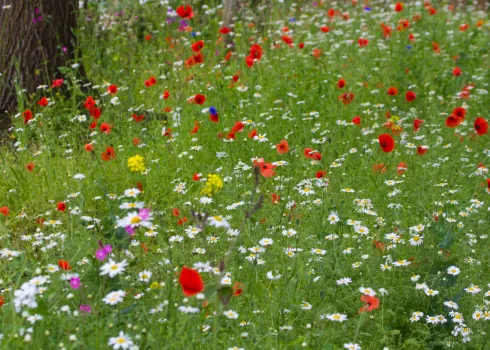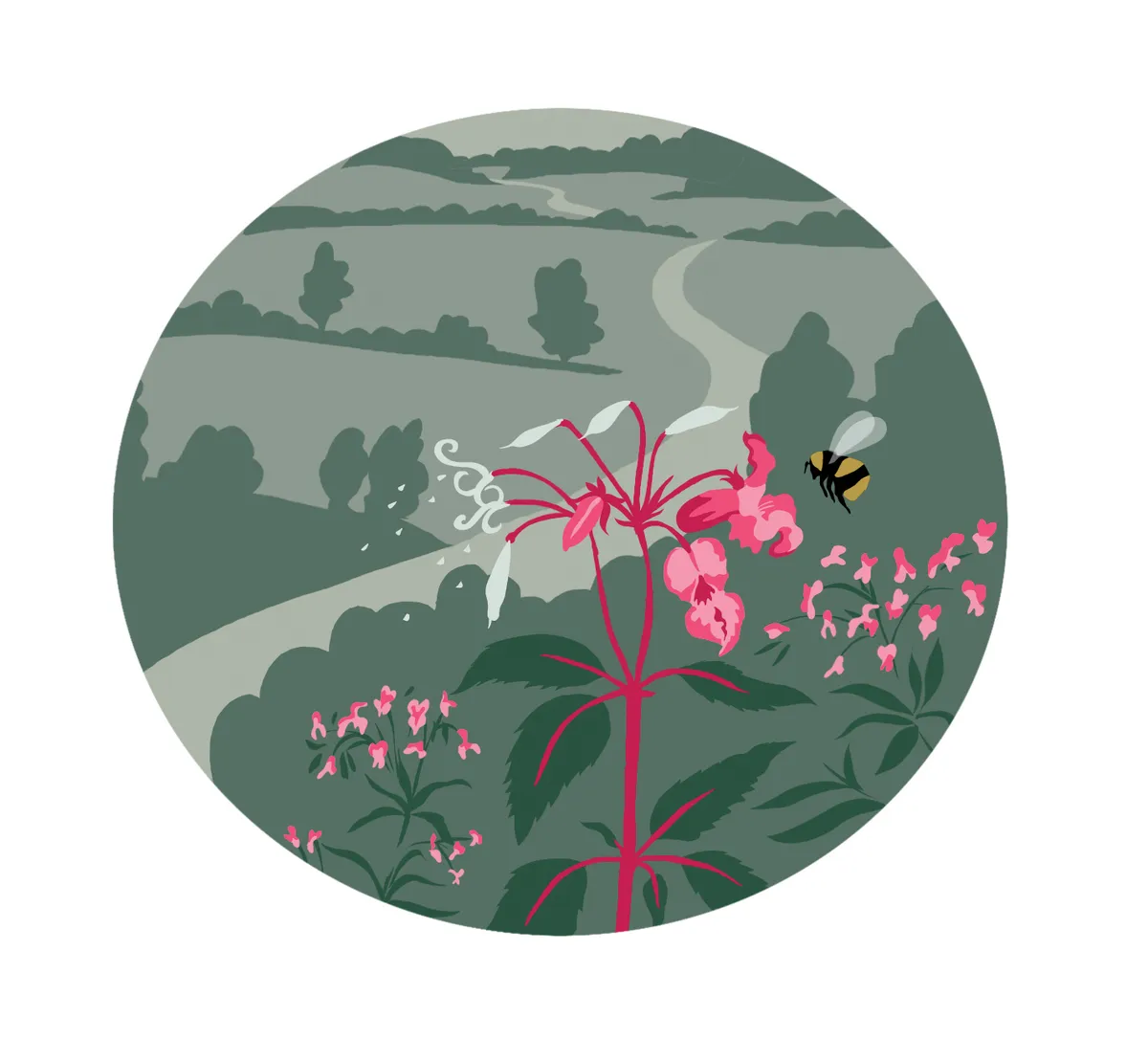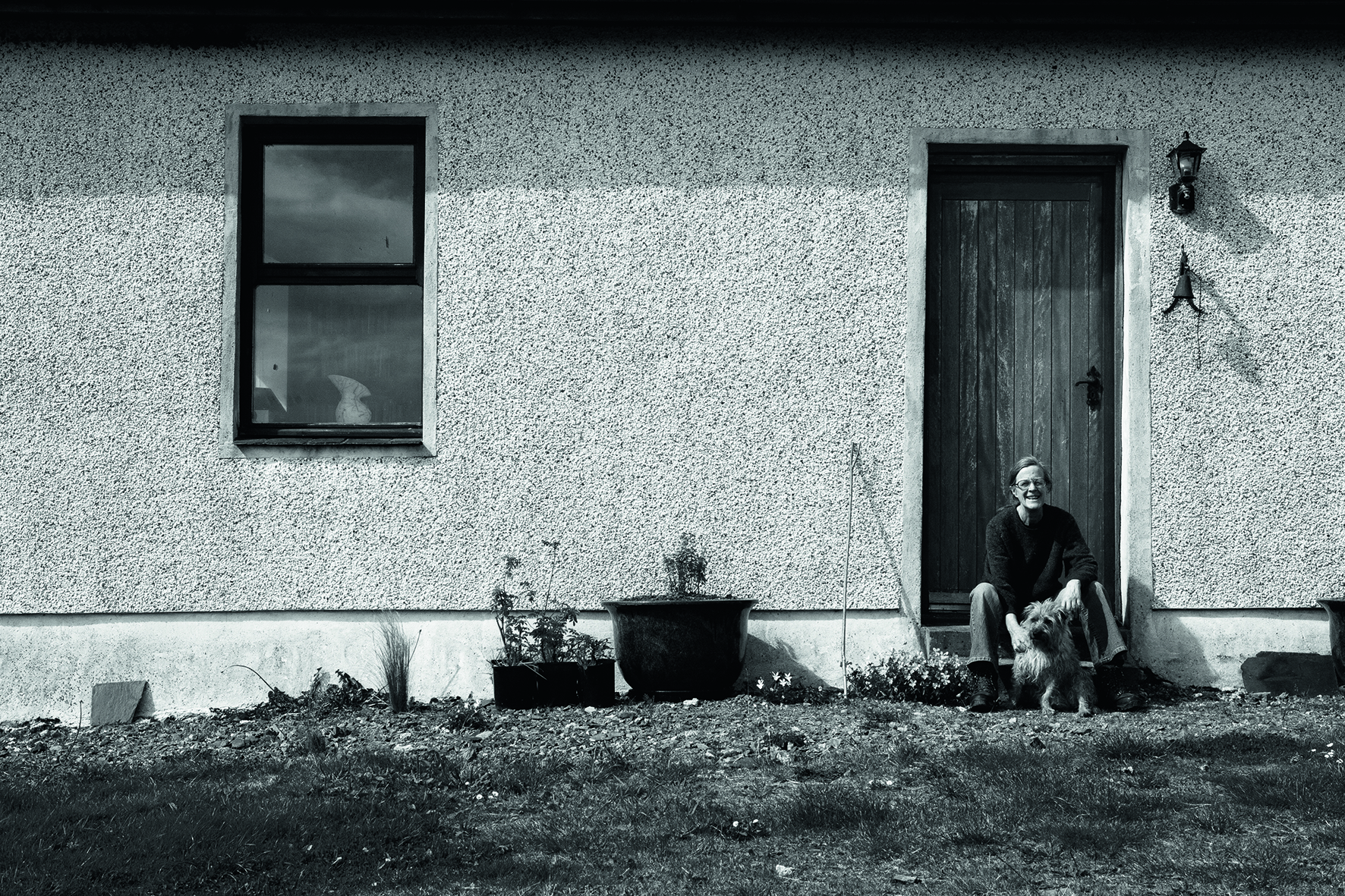We seem to have a rather weird prejudice against ‘immigrant’ wildflowers. Himalayan balsam is the current villain along with Japanese knotweed, Spanish bluebells and Rhododendron ponticum. This is partly a trick of language: because these plants are often very successful and also hard to manage we call them ‘invasive’, which of course comes from ‘invaders’: the enemy at our door.
It is weird for at least two reasons. The first is that we love gardens and for 400 years have diligently imported ‘exotic’ plants to brighten them up. It seems a little unfair to complain when they feel so welcomed that they spread out beyond our artificial boundaries and into the ‘wild’ countryside. The second is that, in one sense, we have virtually no indigenous flora: all our wildflowers are species that originated somewhere else.

Between around 115,000 and 11,700 years ago almost all of Britain was locked down under an ice cap, in places well over a mile deep. (The very south of England was not glaciated in this overwhelming way, but at best it was a polar desert.) When the climate warmed and the ice retreated there was not much left living. As well as the intense cold, ice grinds down soil and shoves rocks about almost casually in its passing. The retreating ice would have left a harsh blank surface with nothing green growing on it.

Since 1963, we’ve had a clearer idea about what happens next because the island of Surtsey, just off the south coast of Iceland, exploded volcanically out of the ocean to create over one square mile of just this sort of terrain. First, you get lichens that create new soil, then very gradually, from wind or wave-carried seed, you get new plants; these attract passing birds which bring in more seeds. After half a century there are still no trees on Surtsey, no land mammals and few insects.
Who is indigenous?
The process in Britain when the ice retreated was probably a bit faster, because, until less than 10,000 years ago, it was still joined to the rest of Europe, so pioneer species had a natural causeway to help them move northwards. In many biological disciplines, the flooding of this causeway marks the point at which we stop talking about ‘indigenous’ or ‘native’ species – if a species of animal (fallow deer, for instance, grey squirrels or pheasants) were not resident before this they are not technically ‘native’ because it’s likely they were introduced by humans.
A great many of our wild plants fall into this category. The Romans ‘gave’ us nettles (our damp air gave Romans rheumatism, which they treated by nettle scourging!), and ground elder because Romans thought it was tasty, and it is if you cook it properly. In their turn, nettles are a crucial food supply for several species of butterfly, including red admirals.
Perhaps we need to relax about these new arrivals – they are part of a long, long story. Nature evolves, develops, changes. When bluebells are shimmering in their extraordinary blue drifts in the woods does it matter much if they are ‘native’ or Spanish or Hyacinthoides x massartiana – the hybrid of the two? Himalayan balsam is so very pretty and bees love it. It is all swings and roundabouts. Our wildflowers are far more threatened by nitrates on our fields and from our cars. Can’t we just enjoy what we’ve got? (But perhaps I’ll make an exception for giant hogweed because it’s toxic and skunk cabbage because it stinks.)
Sara Maitland is a writer who lives in Dumfries and Galloway. Her works include A Book of Silence and Gossip from the Forest
